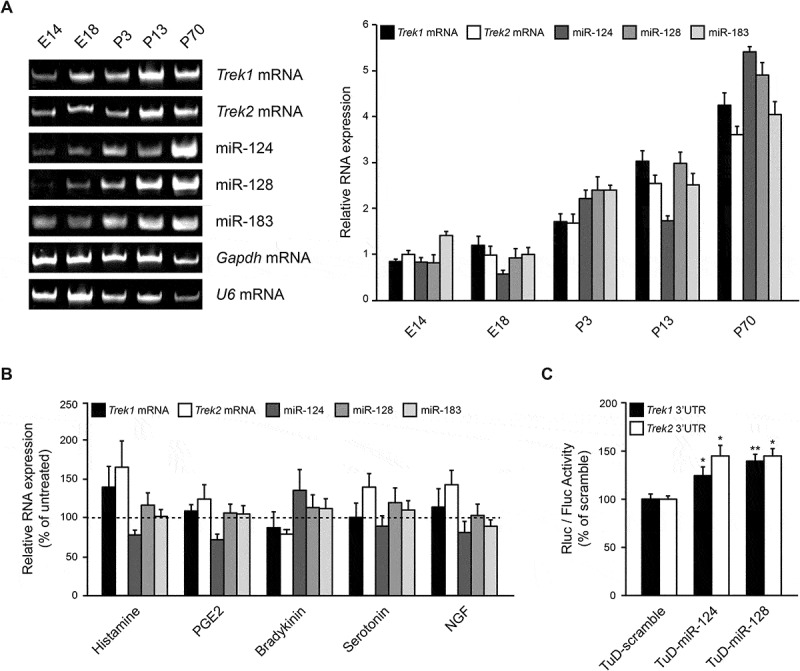Figure 4.

miR-124 expression inversely correlates with Trek1 and Trek2 mRNA expression. (A). Representative gel and graph of the RT-PCR amplification products of whole brains from different developmental stages (embryonic day 14 (E14) and 18 (E18), postnatal day 3 (P3), 13 (P13) and 70 (P70)) extracted from mice showing the expression of miR-124, miR-128, miR-183, Trek1 and Trek2 mRNAs throughout development in the brain. Cycles were falling within the linear range of amplification and the number of PCR cycles for each primer pair was different. The amount of starting template for each condition was normalized to Gapdh mRNA. Data show the mean ± SEM from 3 independent experiments. These data demonstrated that miR-124, miR-128, miR-183, Trek1 and Trek2 mRNAs are co-expressed in the nervous system and levels increase with ageing. (B). Primary cultures of adult DRG neurons were incubated with the pro-inflammatory mediators Histamine (100 μM), Prostaglandin E2 (PGE2, 10 μM), Bradykinin (1 μM), Serotonin (10 μM) and Nerve Growth Factor (NGF, 50 ng/ml) and 24 hours later, total RNA was extracted and analysed by RT-qPCR. U6 mRNA was used as an internal reference control. These assays demonstrated that miR-124 expression inversely correlates with Trek1 and Trek2 mRNAs expression, compared to untreated cells. Data show the mean ± SEM from 4 independent experiments. C. miR-124 and miR-128 regulate TREK1 and TREK2 expression in DRG neurons. Primary cultures of adult DRG neurons were co-transfected with psiCHECK-2/Trek1 or Trek2 3ʹUTR plasmids and either of TuD-scramble control, TuD-124, or TuD-128 plasmids and luciferase activity was measured 48 hours later. These assays demonstrated that endogenous neuronal miR-124 and miR-128 bind to luciferase mRNAs bearing Trek1 or Trek2 3ʹUTR and block their translation. Data show the mean ± SEM from 5 independent experiments (*, p < 0.05; **, p < 0.01).
